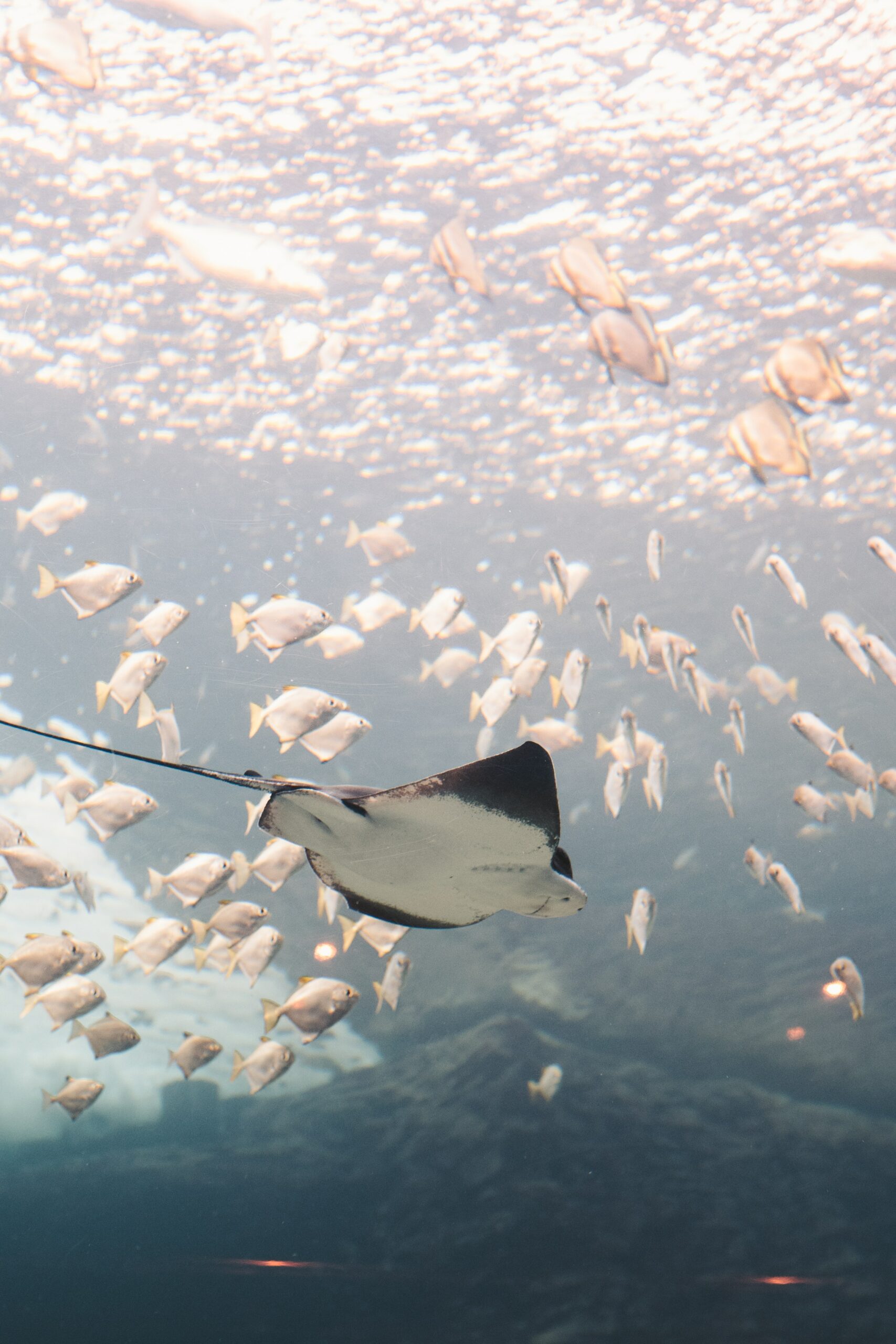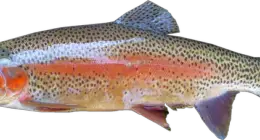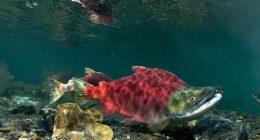Skates are generally smaller in size compared to stingrays and have a more triangular body shape. They also tend to have rougher skin with small thorns or spikes. Stingrays, on the other hand, have a flattened diamond-shaped body and smooth skin.
Skate

Skate, also known as the “Rajidae,” are a type of cartilaginous fish found in oceans all over the world. With their flat bodies and diamond-shaped outlines, skates have a distinct appearance that sets them apart from other sea creatures.
Stingray

A stingray is a flat, cartilaginous fish with a distinctive diamond-shaped body and a long, whip-like tail armed with a venomous barb. They inhabit oceans worldwide and are known for their graceful swimming. Stingrays are bottom-dwellers and feed on various marine organisms.
Skate Vs. Stingray – Key differences
| Aspect | Skates | Stingrays |
|---|---|---|
| Body Shape | Generally, a more rounded or oval body shape | Distinctively flat and diamond-shaped body |
| Tail | Have a shorter and thicker tail, often without a stinger | Have a long, whip-like tail with a venomous barb |
| Habitat | Primarily found in marine environments, including both shallow and deep waters | Often inhabit coastal and shallow waters, frequently seen near the ocean floor |
| Feeding Behavior | Predominantly bottom-dwelling and feed on various marine organisms | Also bottom-dwelling, but they have specialized mouths for suction-feeding on prey like mollusks |
| Venomous Stinger | Typically lack a venomous stinger, although some skates have mildly toxic spines | Possess a venomous barb on their tail, which they use defensively |
| Size | Skates tend to be smaller in size, with some exceptions | Stingrays can vary widely in size, with some species reaching significant dimensions |
| Fins | Often have more prominent pectoral fins, which resemble wings | Pectoral fins are not as developed and don't resemble wings as much |
| Taxonomy | Part of the Rajiformes order within the class Chondrichthyes | Part of the Dasyatidae family within the same class Chondrichthyes |
Skate Vs. Stingray – Habitat and Distribution
Skates
- Habitat: Skates are typically found in a variety of marine environments, including both shallow and deep waters. They are often associated with sandy or muddy seabeds.
- Distribution: Skates have a wide distribution and can be found in oceans around the world. They are commonly found in the Atlantic, Pacific, and Indian Oceans, and many species inhabit both cold and temperate waters.
Stingrays
- Habitat: Stingrays primarily inhabit coastal and shallow waters. They are often seen near the ocean floor, where they feed on prey like mollusks and small fish. Stingrays are also known to enter estuaries and lagoons.
- Distribution: Stingrays have a diverse distribution, with species found in tropical and subtropical waters of the Atlantic, Indian, and Pacific Oceans. They are more commonly encountered in warmer waters, especially in tropical regions.
Skate Vs. Stingray – Diet and Feeding Habits
Skates
- Diet: Skates are primarily carnivorous and feed on a variety of marine organisms found on or near the ocean floor. Their diet includes crustaceans, small fish, mollusks, worms, and other benthic (bottom-dwelling) creatures.
- Feeding Habits: Skates are bottom-feeders and use their specialized jaws to crush and grind their prey. They have flat teeth adapted for crushing hard-shelled organisms like clams and crabs. Skates are often ambush predators, lying in wait for prey to come within reach.
Stingrays
- Diet: Stingrays are also carnivorous and primarily feed on bottom-dwelling prey. Their diet includes mollusks, crustaceans, small fish, and various invertebrates. Stingrays have specialized mouths designed for suction-feeding.
- Feeding Habits: Stingrays use their pectoral fins to create a suction effect, drawing in water and sand to uncover buried prey. They then use their jaws to capture and consume their suctioned-up prey. This unique feeding behavior allows them to locate and feed on hidden organisms within the substrate.
Skate Vs. Stingray – Differences in Body Shape and Movement
Body Shape
- Skates: Skates typically have a more rounded or oval body shape. Their body is relatively thicker, and their pectoral fins, which are often large and wing-like, extend from the sides of their body. Overall, skates have a relatively uniform and less flattened body shape.
- Stingrays: Stingrays are known for their distinctively flat and diamond-shaped body. Their body is significantly flatter and wider than that of skates. Stingrays also have pectoral fins, but these fins are typically more elongated and resemble wings, contributing to their flat appearance.
Movement
- Skates: Skates move by undulating their large, wing-like pectoral fins in a manner similar to the way birds flap their wings. This motion allows skates to glide smoothly through the water, often near the ocean floor. They are not known for their speed but exhibit graceful swimming.
- Stingrays: Stingrays also use their pectoral fins for movement but in a different way. They create a wave-like motion by flapping their pectoral fins, propelling themselves forward. Stingrays are generally more agile swimmers than skates and are known for their ability to navigate swiftly, especially in shallow waters.
Skate Vs. Stingray – Differences in Venom and Defense Mechanisms
- Skates: Skates do not possess a venomous stinger or barb. They rely on different defense mechanisms to protect themselves. Some skates have mildly toxic spines on their dorsal (top) side, which they may use defensively. However, these spines are not as potent as the venomous barbs of stingrays.
- Stingrays: Stingrays are equipped with a venomous barb located on their long, whip-like tail. This barb contains venom-producing glands that can inject venom into potential threats when the barb is driven into an attacker. The venom can cause intense pain, tissue damage, and, in some cases, serious injuries to predators or humans who accidentally step on or handle stingrays.
Human Interaction with Skate and Stingray
Skates
- Fishing: Skates are occasionally caught by recreational anglers as bycatch while fishing for other species. In some regions, skates are targeted as a food source, and their wings are often used for culinary purposes.
- Research: Skates are subjects of scientific research and are sometimes studied by marine biologists and ecologists to better understand their biology, ecology, and behavior.
- Aquariums: Skates are featured in some public aquariums as part of educational exhibits, allowing visitors to observe these animals up close and learn about their unique characteristics.
Stingrays
- Aquariums: Stingrays, especially those with relatively mild venom, are commonly displayed in public aquariums as interactive exhibits. Visitors can often touch and feed stingrays under controlled conditions.
- Tourism: In some coastal regions, there are opportunities for tourists to participate in guided tours or excursions that allow them to swim with and observe stingrays in their natural habitat. These tours emphasize safe and responsible interactions with these animals.
- Stingray Injuries: Accidental encounters with stingrays can result in injuries, typically when a person steps on a stingray buried in the sand. Such encounters can lead to painful stings and, in rare cases, more severe injuries that require medical attention.
- Conservation Efforts: Stingrays, like other marine species, are subject to conservation and protection efforts in various regions to ensure their populations are sustained and their habitats are preserved.
It’s important to note that while human interactions with these animals can be educational and enjoyable, especially in controlled environments like aquariums, interactions with wild skates and stingrays should be approached with caution and respect for the animals’ natural behaviors and habitats. In the case of stingrays, avoiding accidental contact with their barbs is crucial for safety.
Image Credits
Featured Image By – Photo by Ben Bannister
Image 1 By – NOAA/MBARI, Public domain, via Wikimedia Commons
Image 2 By – Photo by Taryn Elliott









